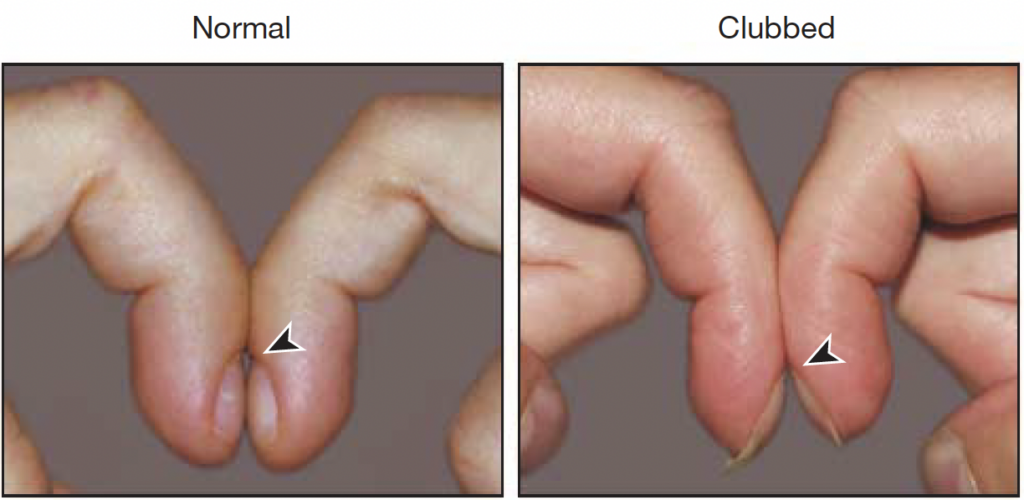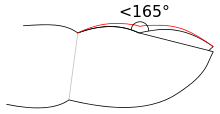
The association of clubbing of the fingers with an underlying disease has been known since Hippocrates.
The underlying mechanism of clubbing is unknown. However, growth factors such as vascular endothelial growth factor (VEGF), growth hormone, and platelet-derived growth factor (PDGF) seem to play a role along with hypoxia in certain diseases.
It can be congenital (present from birth) or acquired due to a disease (in fact, in many diverse conditions). It can also be idiopathic or familial. The familial form usually transmits as an autosomal dominant trait.
Clubbing itself does not need treatment.
Causes of clubbing
There are 50+ recognised causes of clubbing. They are described on MyHSN here.
‘Clubbing’ mnemonic
C – cyanotic heart disease, cystic fibrosis
L – lung cancer
U – UC/CD (inflammatory bowel disease)
B – bronchiectasis (and other causes of pulmonary fibrosis)
B – biliary cirrhosis
I – infective endocarditis
N – neoplasia (other)
G – gastrointestinal disease (other).
Clinical assessment and investigation
Its typical appearance may be noted during a physical examination.
Schamroth’s Window Test. Placing the nails of the index fingers together; normally, a small diamond-shaped window is visible between the nail beds. In clubbing, this window is absent.

When this is present, it called Schamroth’s Sign.
Associated conditions should be identified by taking a detailed medical history; with particular attention is paid to lung, heart, and gastrointestinal conditions – and conducting a thorough clinical examination. This may show clinical features relevant to the underlying diagnosis.
Investigations should include:
- Blood tests – FBC, U+E, LFT, bone, glucose, CRP
- Imaging/other – e.g. ECG, chest x-ray and a CT of the chest, abdomen and pelvis, may reveal otherwise asymptomatic cardiopulmonary or gastrointestinal disease.



